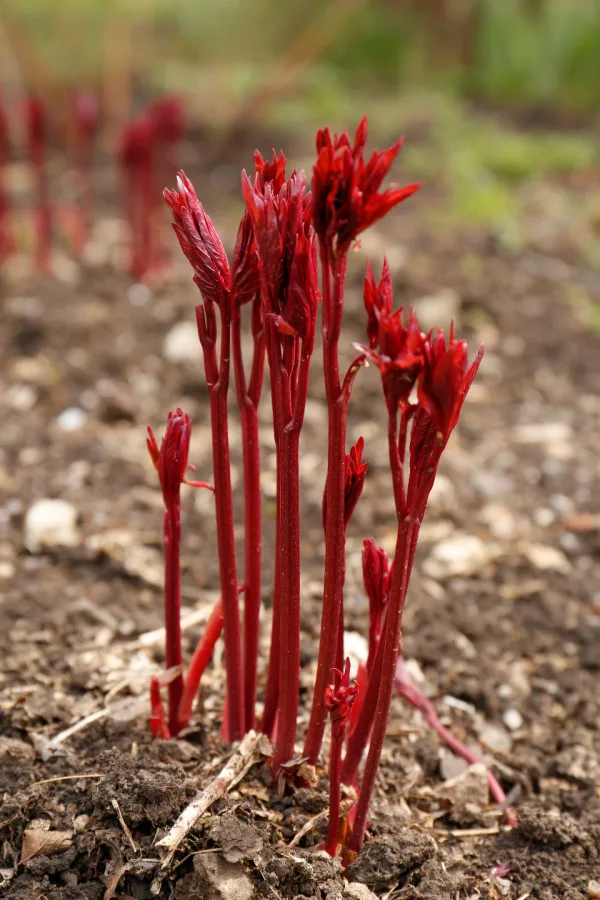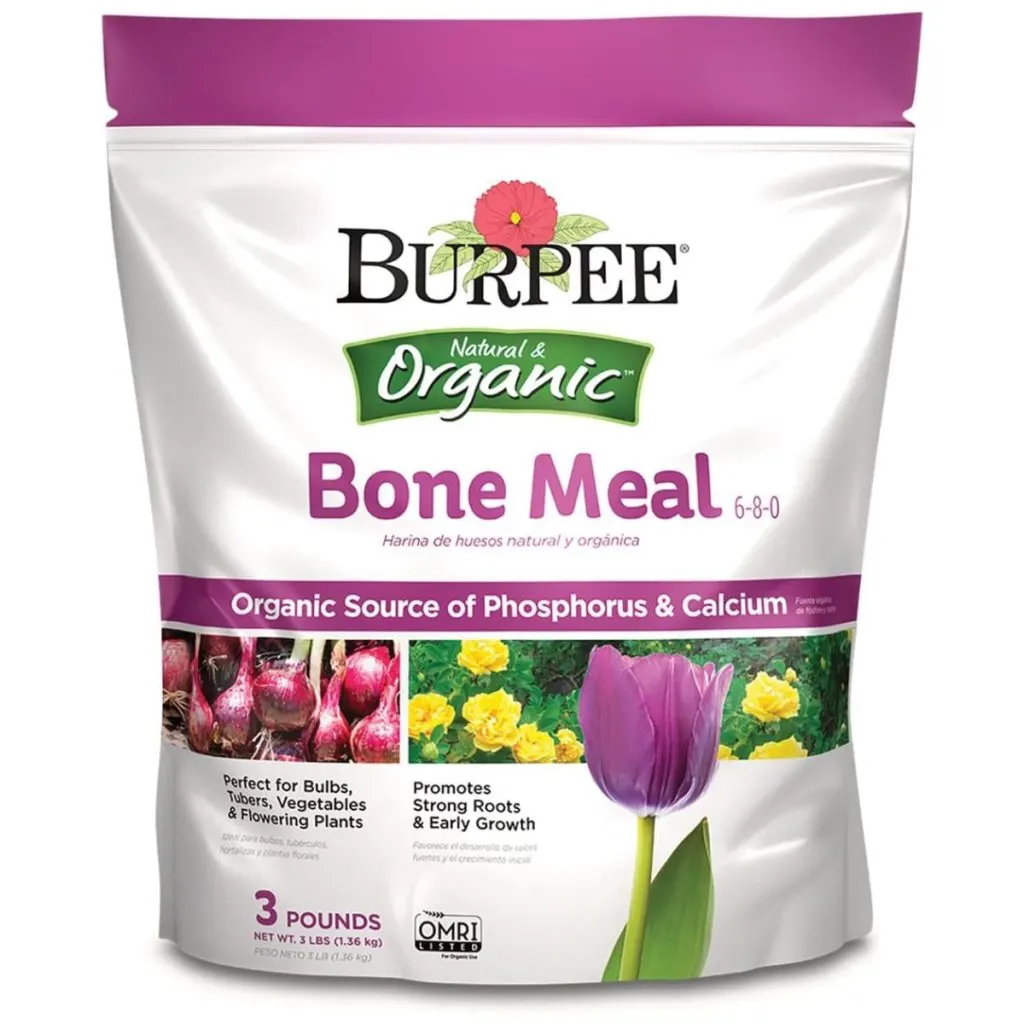One of the biggest keys to getting your peonies to bloom big and bright in the spring is to fertilize them with the right set of nutrients at just the right time. And as it turns out – that time just happens to be in very late winter, right before spring arrives!
Peonies provide some of the earliest and most colorful flowers to your landscape. Depending on the climate where they grow, they can burst forth in bloom anywhere from early April to mid June. And when they do, they bloom with spectacular color and size in bright hues of white, pink, red, yellow, and even orange.
The flowers can be massive. Although the average variety produces blooms in the range of 5 to 6 inches, some species have flowers as large as nine inches or more! And even though individual blooms usually last for just a little over a week, a single bush will produce new flowers for up to three or four continuous weeks. That of course, can give long lasting color to a spring or early summer landscape!

But to create that incredible flush of blooms, peony bushes need power in the form of nutrients. And in order to help your peony bush bloom big in mid to late spring, all of that energy needs to be given to it before it ever begins to spring to life.
How & Why To Fertilize Peonies Before Spring Arrives
Why Late Winter Fertilizing Is A Must For Peonies
Although it depends on the climate and variety, most peony bushes bloom in early to mid spring. If your climate happens to be extremely cold and your winter longer, they can bloom a bit later towards the end of spring or even in the early summer months.
But it is how peonies first grow and bud in the spring that matters most. Especially when it comes to fertilizing them for success. Herbaceous peonies die back at the end of each growing season. They then begin to regrow new stems and foliage up from the ground in very early spring.
It is these stems that will eventually produce the buds and blooms of the flowers for the upcoming season. And that is extremely important because they need power to grow right from the start!
Giving Peonies A Boost Before They Sprout – How & Why To Fertilize Peonies Before Spring
In order to help this year’s flowering potential, energy needs to be supplied to the crown and roots of the plants before they begin to grow. As in late winter or very early spring before they show the first signs of sprouting up.

By supplying power before they begin to sprout, all of that energy helps to form more buds and blooms. But if you wait until the peonies sprout and fill out – the nutrients you supply will be too late. At least when it comes to helping with this year’s flowering.
Because of this, the best time to fertilize your peonies is three to four weeks before they will be coming out. This gives the nutrients time to break down and absorb into the crown and roots. Now that we’ve covered when to fertilize – it’s time to look at which type of fertilizer is best to use to power big peony blooms!
Using Bone Meal To Power Peonies – How To Fertilize Peonies Before Spring Arrives
Without a doubt, the best fertilizer to use to power peonies is bone meal. Bone meal is loaded with three very important ingredients that help peonies bloom – calcium, phosphorous, and a bit of nitrogen as well.
Calcium helps to promote strong early cell growth for healthy stems and foliage. Without a strong support system, peonies simply won’t have the strength to produce big blooms. And when it comes to powering more blooms than ever – phosphorous is essential. It not only helps to form blooms but energize them as well!
As for the nitrogen, it helps power overall plant growth for a healthier, stronger bush. Not only does bone meal have all three of these important ingredients, they are also in a form that can be easily absorbed by the crown and roots. Just one more reason bone meal is perfect for peonies! Affiliate Product Link: Burpee Bone Meal Fertilizer

So how much bone meal do you need to power a peony bush? For best results, sprinkle about 3/4 to 1 full cup per crown. Once you apply it, it’s a great idea to water in the bone meal to help the crowns start soaking the nutrients in right away.
Fertilizing Peonies Before Spring Arrives – And After They Bloom!
Beyond fertilizing your peonies in late winter before they leaf out, you should also give them a bit more bone meal right after they finish blooming.
This will help the plant recover the energy it used for its spring bloom set. This feeding can be a bit lighter at about 1/2 cup per plant. It helps the foliage stay strong for the remainder of summer. More importantly, it will also power up the root structure to continue to develop for even better blooms next year!
It’s important to apply the 2nd application of bone meal right after the bush finishes blooming. Never fertilize your peonies in mid to late summer or fall. This can lead to unwanted late season growth that uses up the plant’s resources instead of helping the crowns and roots conserve energy.
End Of Season Peony Maintenance – How & Why To Fertilize Peonies Before Spring
In late fall, once your peonies die back, it’s important to cut them back to the ground. As long as the foliage is disease free, it is more than fine to add to your compost pile. To cut back, snip off the stems about an inch above the surface of the soil.

Cutting off the foliage before winter arrives has a couple of advantages for your plants. First, it allows the bush to save all of its energy for the crown and roots. But it also helps pests from finding and feeding on the dying foliage in late fall or winter. Pests that can then be a problem in your flowerbeds next year. For more fall care peony tips, see our article: Caring For Peonies In The Fall – How To Cut Back, Divide & Transplant Peony Bushes! And for more tips on late winter fertilizing, be sure to check out How To Fertilize Azaleas Before Spring – Get Bigger & Better Blooms!
Here is to fertilizing your peonies before spring arrives this year, and to having big, beautiful peony blooms to enjoy throughout the spring! Happy Gardening – Jim and Mary.
Old World Garden
Jim and Mary Competti have been writing gardening, DIY and recipe articles and books for over 15 years from their 46 acre Ohio farm. The two are frequent speakers on all things gardening and love to travel in their spare time.
As always, feel free to email us at thefarm@owgarden.com with comments, questions, or to simply say hello! You can sign up for our free email list in the subscribe now box in the middle of this article. Follow us on Facebook here : OWG Facebook. This article may contain affiliate links.
